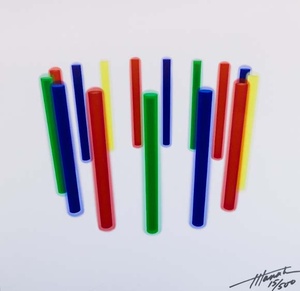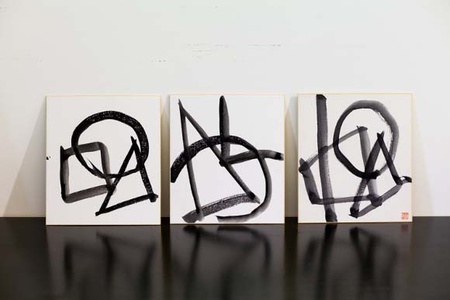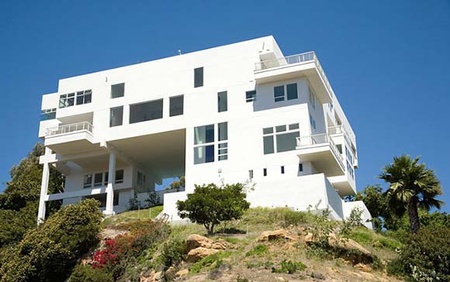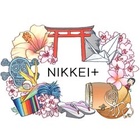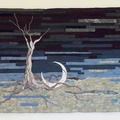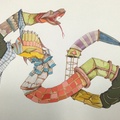One of the first sights a visitor to Los Angeles will see are the giant glowing pillars arranged around the city’s international airport. Eleven glass columns approach the airport along Century Blvd, ascending in height from 25 to 100 feet to mimic an airplane lifting into the sky. Fifteen more 100-foot shimmering colored pillars encircle the airport—an “electronic Stonehenge” that hints at the glitz and glamour to be found within the city.
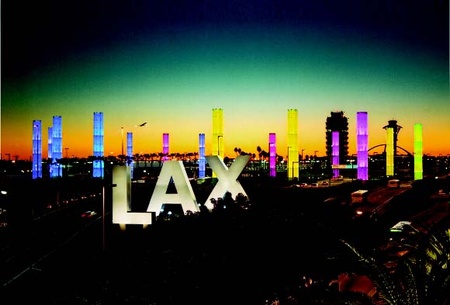
"Project Gateway LAX" by Ted Tokio Tanaka Architects, 2000 | Courtesy of Ted Tokio Tanaka Architects.
With Project Gateway LAX, Japanese-born architect Ted Tokio Tanaka, aware that Los Angeles had very few architectural landmarks other than the Hollywood sign, sought to create a structure that symbolized a city that bridges many cultures and contains many moods. With these colored glass towers, Tanaka created an iconic design. It was only built 13 years ago, but this luminous gateway to the City of Angels seems to have always been part of our urban landscape.
Born in Tokyo, Tanaka came to the United States in 1958 when he was 15 years old. He studied architecture at Arizona State University, then moved to California in 1969, where he established his own practice, Ted Tokio Tanaka Architects, in 1974.
For nearly forty years, in both Southern California, England, and Japan, he has been designing elegant, ultra-modern private residences and eye-catching public structures with a clean, simple style that subtly fuses Eastern and Western architectural influences. His global approach is apparent in his Mineries Townhouse, a slim duplex in Marina del Rey which he completed in 1985 and for which he received an American Institute of Architects Design Award.
His childhood in Tokyo, where urban living spaces are typically small and narrow, prepared him to address the challenge of a very narrow vertical space. Tanaka responded elegantly with a bright, high-ceilinged living space with a strong play of geometry inspired by Cubism and the architecture of R.M. Schindler. “I like designing in tight space with lots of limitation,” says Tanaka. “It’s challenging to provide privacy, natural light, sense of spaciousness, and exciting special experience.”
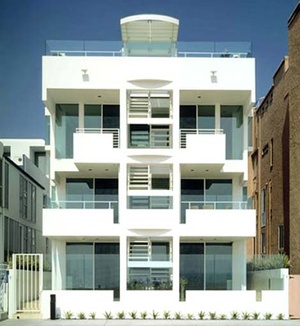
Mineries Condominium, later converted to Z Residence by Ted Tokio Tanaka Architects, 1985 | Courtesy of Ted Tokio Tanaka Architects.
In 1989, when Tanaka started work on a four-unit condominium along Venice’s Abbot Kinney Boulevard, he drew inspiration from Abbot Kinney. Kinney was the developer and conservationist who founded Venice, California in 1905 with the hope of creating a cultural hub on the Pacific Coast. Tanaka’s Cabrillo Townhouse pays homage to the history of the area and Kinney’s vision with architectural elements, including the cutout pediments and arches, the fretted roof line, and the overall adherence to symmetry—all inspired directly from the local seaside architecture of the 1920s.
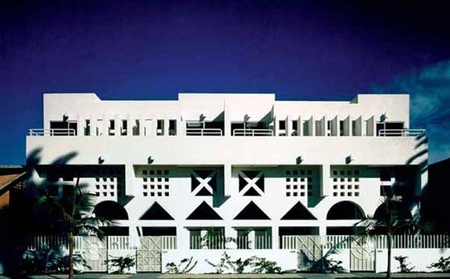
Cabrillo Townhouse, Abbot Kinney, Venice, Calif. by Ted Tokio Tanaka Architects | Courtesy of Ted Tokio Tanaka Architects.
More recently, Tanaka and his firm completed the spiritually uplifting Gold Line Station in Little Tokyo. For this project, he collaborated with performance artist Hirokazu Kosaka to design a station that was “very abstract, to reflect the culture of Japan, but also to keep it very artistic.” Together, their goal was “to create a much needed tranquil space in a very busy city.” Much of the design was inspired by Zen Buddhist archery, a tradition which Kosaka has mastered and often incorporates into his performance art. The station canopies echo the curve of Japanese bows, and six round smooth granite benches with concentric circles of black and white imitate Zen archery targets. In Zen archery, a perfect shot requires the release of an arrow in the instant between one’s heartbeats: a moment in time and space free of thoughts. According to Tanaka and Kosaka, “This is the station between heartbeats, a space that is neither black nor white, but gray…an infinite space for different moods.”
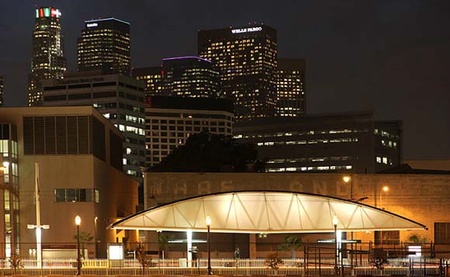
Little Tokyo/Arts District Gold Line Station by Ted Tokio Tanaka with Hirokazu Kosaka, 2009 | Courtesy of Ted Tokio Tanaka Architects.
Even though he is at an age when many people would consider retiring, Tanaka has embarked on several new projects that will lead him in very different artistic, spiritual, and geographical directions. Following his 2009 Gold Line Station in Little Tokyo, his firm was awarded the contract to design and build a Metro Regional Connector that will link the Blue and Gold Lines underground with all three Downtown subway stations, which will make it possible to travel to Little Tokyo from Santa Monica, Long Beach, Pasadena, or East L.A. without a transfer.
Tanaka’s overground station at the corner of 1st and Central will resemble the city’s other Metro Regional Connectors, but his vision is to create a local flavor with public art projects in the surrounding plaza and “to enhance the continuation of pedestrian activities currently occurring on Central Avenue and First Street in Little Tokyo.”
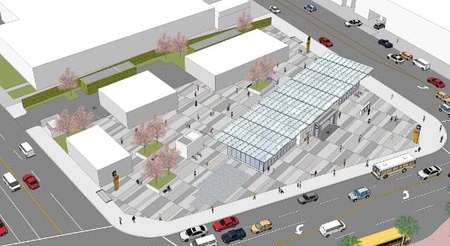
Design for Metro Regional Connector Station at 1st and Central by Ted Tokio Tanaka | Courtesy of Ted Tokio Tanaka Architects.
He also just began work on a master plan for a Buddhist Temple near Rancho Cucamunga in San Bernardino County. Commissioned by a Taiwanese Buddhist group to serve as their US headquarters, the Lingyen Mountain Temple will have an extensive campus comprising worship halls, a library, an exhibition area, and residences.
Unlike his modern projects, this temple project requires him to study traditional Buddhist architecture and ensure the buildings are positioned correctly in relation to each other and their surroundings to maximize spiritual power. “I have always wanted to design a religious building,” says Tanaka. “Even though I am a Buddhist myself, I never thought I would do a Buddhist temple. I am learning a lot now.”
Tanaka is also giving a lot back to his home country. His wife Masako is from the town of Ofunato, Iwate Prefecture in northern Japan which was devastated by the tsunami of 2011. She was visiting the town when the tsunami struck and witnessed the destruction of her family home and her father’s hospital. With still nothing left of the original town two years after the tsunami, the Tanakas decided to become involved in rebuilding the town. Tanaka is designing buildings, including a Tsunami Memorial Museum and a café, which he hopes will serve as a gathering place for the people of the town. “We want to do what we can to help,” says Tanaka. “This is an opportunity to rebuild a whole community.”
With a profound knowledge of the history of modern design, an architectural perspective that spans the globe, and a genuine desire to enhance communities, Ted Tanaka has built an elegant legacy in concrete, steel, and glass that has greatly enriched Los Angeles and beyond.
For more information about Ted Tokio Tanaka Architects, please see www.ttta.com. Tanaka’s paintings and drawings are on exhibit at MB Abrams online gallery.
*This was an article in the “Asian Accents” series that explored the diverse range of artistic influences from Asia in the arts and culture of Southern California. It was originally published on KCET Artbound on August 2, 2013.
© 2013 Meher McArthur / KCET


